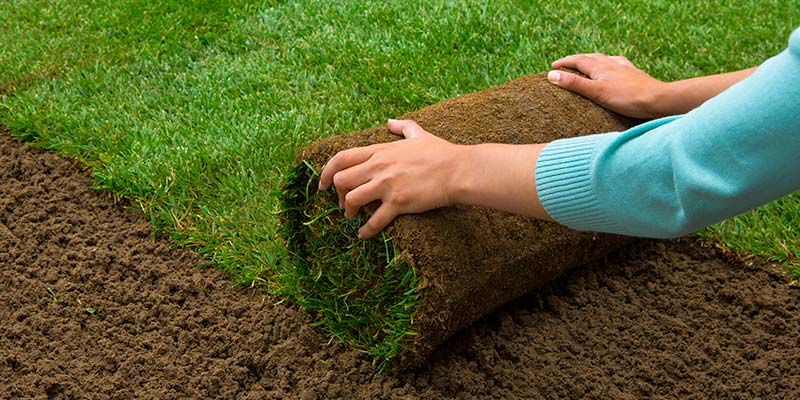
We are fortunate to live in California with it’s relatively mild winter climate in that we still are able to enjoy the beautiful outdoors and tinker in the yard all year long.
Looking for a project to spruce up the front or back yard this winter? One of the best times to plant a new Elite Plus Fescue yard in California is during the cool months of winter. This is counter-intuitive to many who think installing sod during the warmer months of the year will give the new grass its best chance. However, October through April is the best time to establish a Fescue yard.
Sod consists of mature plants which look great when laid down but once the turf is cut from the field, its ability to seek water is limited. It takes a few weeks for the new sod establish roots in the new soil and develop its own ability to find water in the soil profile. With limited roots, heat is an enemy of new sod so it is best to plant during the cooler months of the year.
This wisdom applies mainly to Fescue lawns which remain green year-round in California, which is a feature preferred by most homeowners. Fescue is called a “cool season grass” because it thrives in weather between approximately 40 degrees and 80 degrees.
On the other hand, “warm season grasses” can be planted in the warmer months of the year. These include Hybrid Bermuda and St. Augustine which thrive in hot temperatures so planting from April to September is recommended. Celebration, Tifway, Tifgreen, and TifTuf are Hybrid Bermuda varieties grown by A-G Sod Farms. Each have strengths and weaknesses and the best choice depends on the area to be sodded. For further information, see the Products page at www.agsod.com.
Preparing for Your New Sod
- Observe and repair any parts of the irrigation system that are broken or not delivering even distribution of water to the lawn.
- Prepare the soil in the area you will be planting by removing rocks, existing plants, or other debris from the surface. Rake or till the soil and amend with an additive.
- Do all irrigation and ground prep prior to the day your sod delivery is scheduled to arrive.
- Order sod several days ahead of time to avoid scheduling conflicts.
- When laying the sod, ensure the pieces are snugged up and laid in a brickwork pattern with pieces offset. Cut away edges to fit the contours of your yard and around sprinkler heads as needed.
- After the sod has been laid, it is optional to use a lawn roller or other means of tamping the grass down to get good root contact with the soil.
- Watering needs will depend on the temperature. In the winter, soaking once a day is sufficient. In the spring and fall, watering twice a day for two shorter periods is recommended. In the heat of summer, watering two or three times a day may be needed in the first few weeks. The goal is to keep the soil moist, but not too soggy. Avoid run-off which wastes water.
If you see brown spots, it could be due to underwatering or due to disease. A simple check is to insert a screwdriver in the soil several spots in the brown area. If the soil is moist several hours after irrigation, the brown spots are likely caused by disease. If the ground is dry, the brown spots are likely caused by too little irrigation or poor irrigation patterns.


